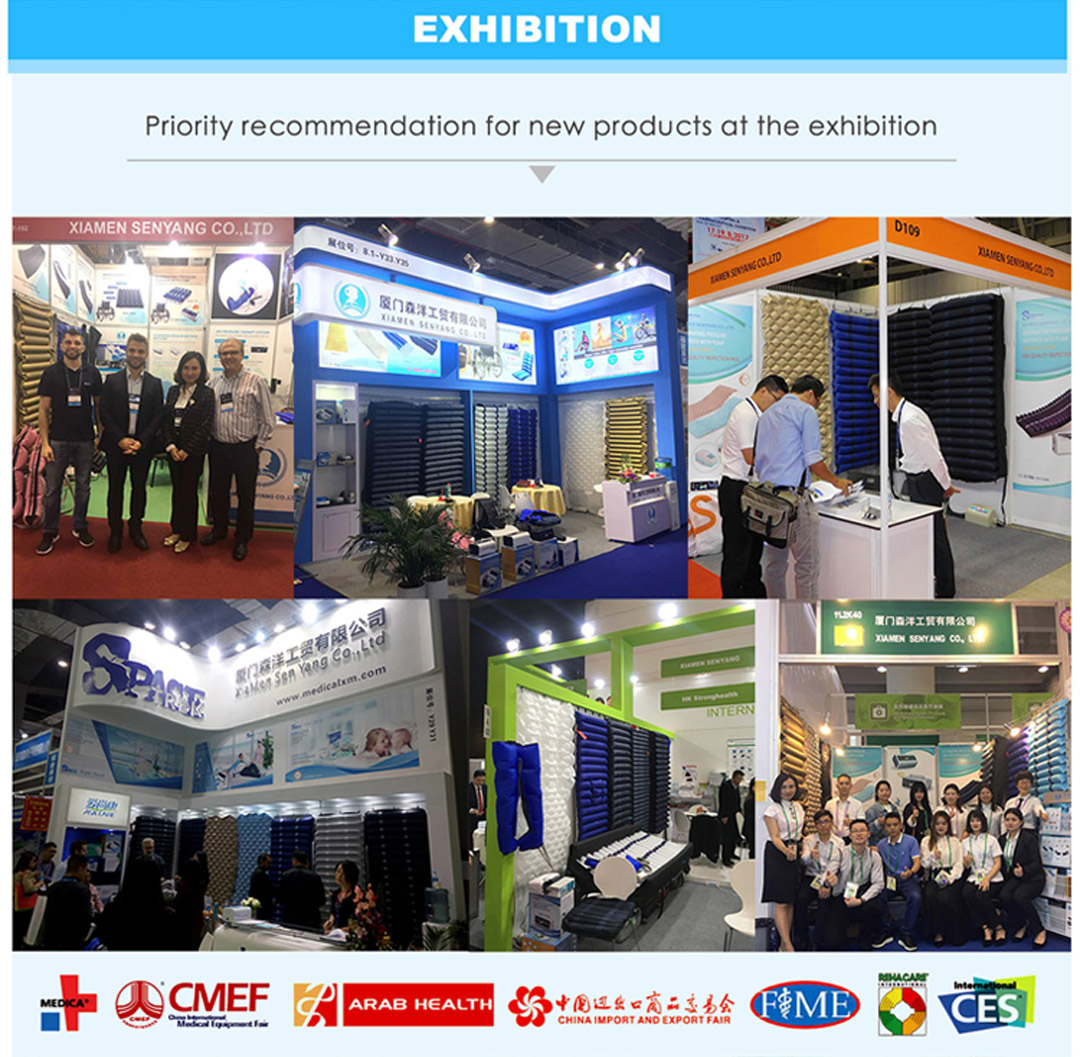Function :
anti bedsore; anti decubitus; elderly careOEM :
AvailableCertificate :
FDA; CE; ISO13485Mattress size :
200L x 90W x 7H cm (after inflation)Color :
Beige; blue; also can be customizedOEM :
AvailableCertificate :
FDA; CE; ISO13485Properties :
Rehabilitation Therapy SuppliesWeight Capacity :
130-135kgMedical grade pvc inflatable bubble bedridden patients anti-decubitus health care air mattress with pump




|
APM-B01 Bubble Air Mattress
|
|
|
FEATURES
|
SPECIFICATIONS
|
|
· For both hospital and home care use
|
· Size: 2000*900*70mm (L*W*H) |
|
· A-B lines alternating air bubbles give super bedsore treatment
|
· No.of bubbles: 130 air bubbles
|
|
· Medical grade PVC material from Taiwan Nanya company,
durable and high quality
|
· End flaps: 400mm
|
|
· Warranty:1 year
|
· PVC thickness: 0.3mm or 0.4mm option
|
|
· One time welded by 200KW power high frequency machine
|
· Repair kit and hose included
|
|
· Daily output 2000pcs bubble mattresses
|
· Weight capacity: 135KG
|
| APP-TKS2012 Air Pump | |
| FEATURES |
SPECIFICATIONS
|
|
Durable ABS pump case
|
Power: 110V/60Hz or 220V/50Hz
|
| Extremely low noise,silent during working |
Air output: ≥6L/min
|
|
Knob control panel,easy to operate
|
Pressure range: 20-120mmHg
|
|
Pressure adjustable
|
Cycle time: 12mins
|
|
Warranty:2 years
|
Power consumption: 12VA
|
|
|
Fuse: 0.5A
|
|
|
Size: 240*110*100mm(L*W*H)
|
|
|
Net Weight: 0.77KG
|







It has been estimated that preventing and treating pressure ulcers in a 600‐bed general hospital costs between £600,000 and £3 million a year(Touche Ross 1993).The cost of treating a patient with a stage 4 pressure ulcer has been calculated as £40,000 (Collier 1999). In particular, there is a high cost associated with prevention of pressure ulcers using pressure‐relieving surfaces and a need for robust economic evaluations to aid rational use of these devices.
A growing body of knowledge about the effectiveness of pressure‐relieving devices (such as mattresses) in preventing the development of pressure ulcers and an increased use of them in NHS hospitals has highlighted the need for clinical practice recommendations that incorporate an analysis of their potential cost–effectiveness.
Do pressure redistributing devices reduce the development of pressure ulcers for those who are at risk of developing a pressure ulcer?
Pressure redistributing devices are widely accepted methods of trying to prevent the development of pressure areas for people assessed as being at risk. These devices include different types of mattresses, overlays, cushions and seating. They may work by reducing or redistributing pressure, friction or shearing forces. There is limited evidence on the effectiveness of these devices and much of the evidence has been funded by industry. The cost of pressure redistributing devices can vary significantly and there is limited evidence on whether more sophisticated devices (for example, alternating pressure devices) provide any additional benefit compared to more basic devices such as high‐specification foam mattresses.
There is also limited evidence on whether different at‐risk sites benefit from using different pressure redistributing devices. For example, a pressure redistributing device used for pressure relief on one site could cause pressure on another site. Further research is needed to identify what devices are beneficial for specific at‐risk sites for all age groups.
 Request for Quotation
Request for Quotation
